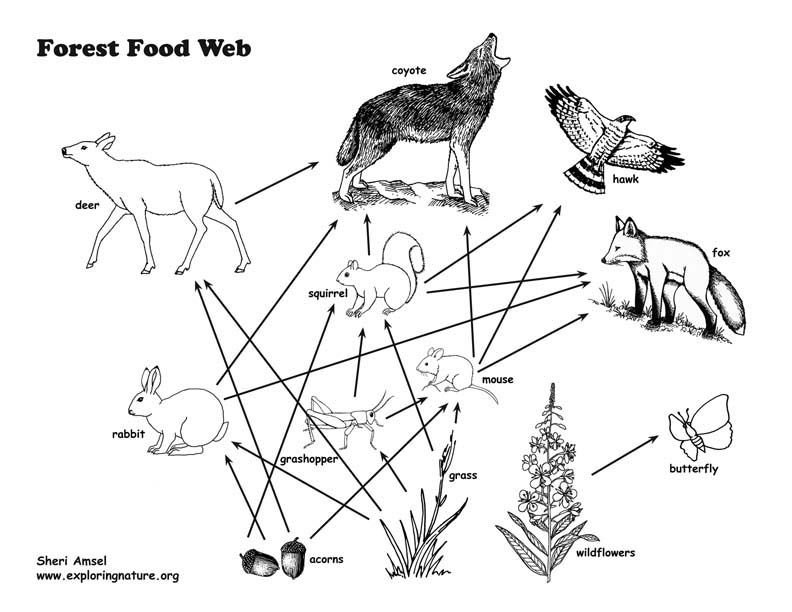

How plants and animals interact in a balance of predator and prey can be made evident by a good illustration pointing out a typical scenario. Food chains are clear views of who is eating who, but do not exist in isolation. In real life all food chains are really part of complex food webs.
Sometimes a species plays a significant role in an ecosystem. If it is removed from overharvesting, over-hunting or environmental changes, the whole habitat can be altered. It can be an interesting exercise to identify keystone species in the area and point them out. Even just species inter dependance is an interesting concept to consider. The Canadian lynx is dependant on snowshow hares for food. If there are fewer hares, the number of lynx will drop as well.
Habitats Within An Ecosystem
Pointing out specific habitats can open up the eyes of visitors. i.e. A bog and a marsh are very different kinds of wetlands. The similarities and differences can be pointed out for students to note.
The changes throughout a creature’s life can be a fascinating study in natural history. Pointing out a particular creature, animal or plant, and following its life cycle can be a great educational tool. i.e. The complete vs. incomplete metamorphosis of insects.
When you research information you must cite the reference. Citing for websites is different from citing from books, magazines and periodicals. The style of citing shown here is from the MLA Style Citations (Modern Language Association).
When citing a WEBSITE the general format is as follows.
Author Last Name, First Name(s). "Title: Subtitle of Part of Web Page, if appropriate." Title: Subtitle: Section of Page if appropriate. Sponsoring/Publishing Agency, If Given. Additional significant descriptive information. Date of Electronic Publication or other Date, such as Last Updated. Day Month Year of access < URL >.
Amsel, Sheri. "Educational Concepts to Teach on the Trail" Exploring Nature Educational Resource ©2005-2024. December 13, 2024
< http://www.exploringnature.org/db/view/Educational-Concepts-to-Teach-on-the-Trail >




